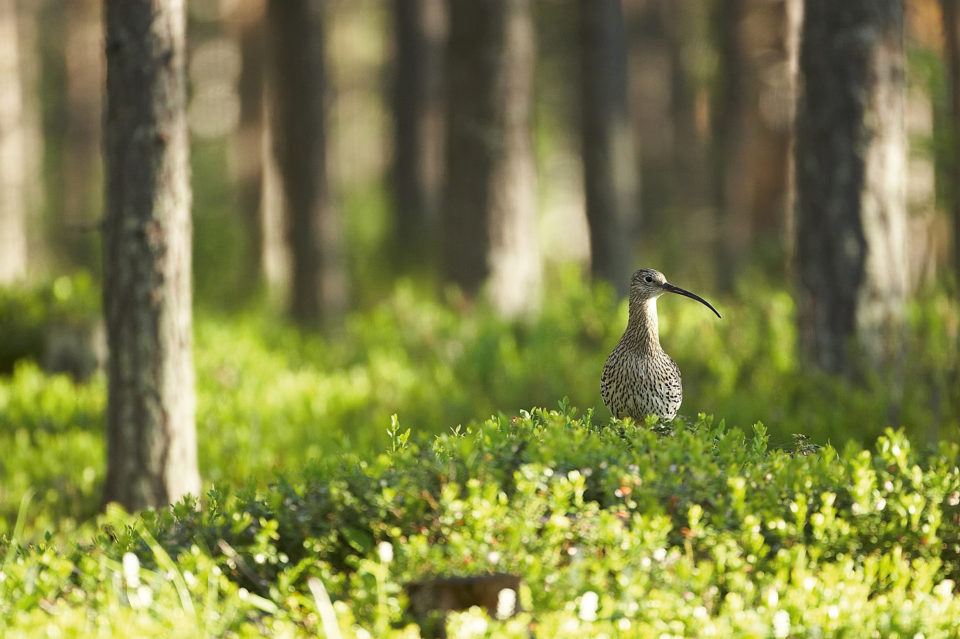Zero Quota for the hunting of Curlew in France!
Publication update – 26/08/2019: Referred to it by the LPO, The French Council of State modified the decree allowing hunting of 6000 Curlews in the 2019/20 season, fixing the quota at ZERO to meet France’s obligations under Bird Directive and AEWA, with immediate effect. No more curlews to be shot this season! https://twitter.com/numenini/status/1166281289818939392?s=20
Publication update – 05/08/2019: Considering the France’s lack of compiliance with AEWA, the IWSG has submitted a call to UNEP AEWA to undertake an Implementation Review Process: https://twitter.com/WaderStudy/status/1157331246793527298
Original post:
A French decree allowing the hunting of 6 000 Eurasian Curlew have been subject to public consultation. The 2019 hunting season will start the first Saturday of August in the Public Maritime Domain and on 15th September in remaining areas. In a letter sent this week to the French ministry, the expert committee on adaptive management, mainly formed by academic researchers, regrets that its concerns and recommendations have been not addressed by the government. The expert committee recommended, in its Opinion to the Minister of the Ecological and Solidary Transition, to not authorize any curlew harvest throughout the national territory, including the Maritime Public Domain, until significant knowledge gaps and related uncertainties linked to available data on the demography of the species, the spatial distribution of populations and hunting practices, have been addressed.
The previous hunting bag of Curlew was estimated to be 6 961 individuals in 2013/14 (Aubry et al. 2016). The quotas of 6 000 individuals proposed in the decree were not supported by any adaptive harvest management (AHM) process because the expert committee was not able to evaluate the impact of hunting on the population dynamics and therefore could not decide on any sustainable hunting bag.
The expert committee on adaptive management in its Opinion about Eurasian Curlew AHM:
“It is not possible to determine the level of a sustainable harvest without information on overwintering curlews in France, the winter destinations of European breeding populations, and therefore on the different populations subject to hunting in France. Access to harvest data is essential to determine i) their level accurately, ii) the origin of birds hunted by the stable isotope method, and iii) the age of the birds captured (notably on the basis of data that has been collected for more than ten years). The lack of information on these three parameters results in a set of many unverifiable assumptions that made the projections of the sustainable demographic models unsafe. For example, if the hunting bag in France is 9 500 individuals (the upper confidence interval of hunting bag estimates in 2013/2014), and it is made up of 70% of West-European birds and the harvest rate is independent of age, then the European harvest would consists of 6 650 individuals including 5 320 adults. On the other hand, if the harvest is 4 400 individuals with 10% of West-European birds with a hunting rate two times larger on juveniles, then the harvest on European populations would consists of 440 individuals including 265 adults. Between those two possible scenarios, there is a factor of 20 in the estimated harvest levels, a too important gap to build pertinent recommendations.”
Complete expert commitee Opinion (in French) at: http://www.oncfs.gouv.fr//IMG/pdf/gestion-adaptative/Avis-CEGA-Courlis-cendre.pdf
As a reminder, according to the International Single Species Action Plan for the Conservation of the Eurasian Curlew (Brown 2015), France has promised to ensure that any harvest of Curlews is sustainable or otherwise to apply a complete moratorium of hunting until the AHM process has been established. France was the last European country to hunt Eurasian Curlew, classified as Vulnerable in both European regional and EU27 assessments of the European Red List of Birds due to the undergoing rapid population declines across the European part of its extremely large global range.

Much has been done, in terms of financial and human investments in Europe, to try to recover, or at least prevent further declines of Curlew breeding populations (7 Life programmes granted by the EU since 2007 according to the Life programme Database of European Commission 2018). To coordinate all these efforts for the recovery of the Eurasian Curlew, the species is part of the recent International 2018-2028 Multi-Species Action Plan for the Conservation of Breeding Waders in Wet Grassland Habitats in Europe (Leyrer et al. 2018). Image: (c) D. Allemand
Link to the 30/07/19 adopted decree at: https://www.legifrance.gouv.fr/affichTexte.do?cidTexte=JORFTEXT000038864820&categorieLien=id
Aubry P., Anstett L., Ferrand Y., Reitz F., Klein F., Ruette S., Sarasa M., Arnauduc J.-P. & Migot P. (2016) Enquête nationale sur les tableaux de chasse à tir – Saison 2013-2014. Résultats nationaux. Faune Sauvage, 310 – Supplément 1, I-VIII.
Brown D.J. (2015) International Single Species Action Plan for the Conservation of the Eurasian Curlew Numenius arquata arquata, N. a. orientalis and N. a. suschkini. AEWA Technical Series No. 58. Bonn, Germany.
Leyrer J., Brown D., Gerritsen G., Hötker H. & Ottva L. (2018) International Multi-species Action Plan for the conservation of breeding waders in wet grassland habitats in Europe (2018-2028). Report of Action A13 under the framework of Project LIFE EuroSAP (LIFE14 PRE/UK/002). NABU, RSPB, VBN & SO.
Featured image: ©F. Cahez
